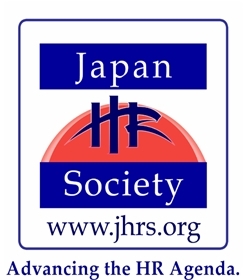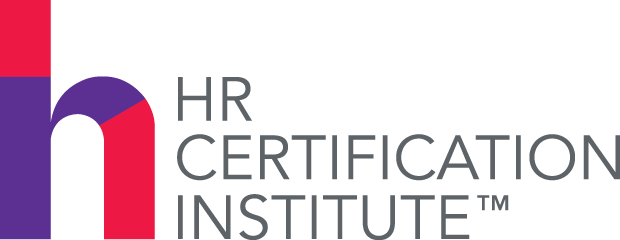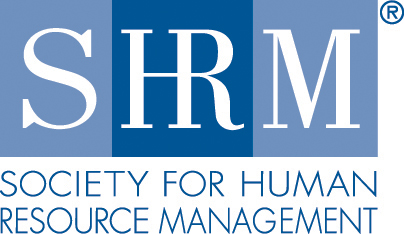Publisher's Message | 発行人からのメッセージ
How Can HR Maximize Leadership Development for Organizational Performance? |
業績向上のためHRは リーダーシップ開発をどう進めるか
Yoshiharu Matsui, Ed.D., MBA, Chief Community Officer, The Japan HR Society (JHRS) |
松井義治(ヨシ) Ed.D., MBA, The Japan HR Societyチーフ・コミュニティー・オフィサー

As companies face dramatic disruptions, investment in leadership development across all levels of the organization has never been a more urgent, important mission of HR.| 企業が劇的なディスラプション(創造的破壊)に直面している今以上に、企業のあらゆるレベルでのリーダーシップ開発への投資がHRにとって緊急で重要な使命とされるときはない。
Translated from Japanese original The U.S.-based Society for Human Resource Management (SHRM), industry experts and many other HR and talent development-related associations such as Aeon cite developing leaders as one of the most crucial elements for organizations. But why is developing leaders so important?
It is because company performance is in direct proportion to the quality of its leaders. In other words, if the quality of the leaders improves, organizational performance improves, and if the quality falls, so does performance. Disney Institute defines the chain of connections for improving organizational performance as follows:
Improvement in quality of leaders ➡ Improvement in members ➡ Improvement in service ➡ Improvement in customer satisfaction ➡ Improvement in performance
The veracity of this chain can be seen in the following findings from a global employee engagement survey conducted in 2000 by the analytics and advisory firm Gallup.
For these reasons, companies like General Electric (GE) that continue to post performance gains over the long term devote considerable time, effort and budget to developing their leaders. Their management team is also closely involved in developing the next generation of leaders.
Unfortunately, many companies spend large amounts of effort on strengthening their business plan and cutting costs as ways to increase performance and survive the competition, but do not devote much of their resources to developing their leaders. As a result, companies in many countries are not seeing their employee engagement rise, and they face challenges in growing their productivity and performance.
How is leadership development implemented in your organization? What kind of leadership development should be undertaken to produce sustained organizational growth?
As many talent development practitioners including the Association for Talent Development (ATD) state, training alone will not cause people to change or achieve growth. Education only becomes successful when it affects behavioral change, and studying does not automatically equate to increasing one’s knowledge. Data also suggests that 80 percent of training budgets are wasted, but why is this?
The leadership development institute Center for Creative Leadership (CCL) maintains that 70 percent of professional growth comes from practical experience on the job. You may learn new ways of thinking, knowledge and skills in a training program. But unless given opportunities to use this learning at work, you will not truly acquire it and the training will not be effectively utilized in the workplace. So not only is it important to have leadership development and training programs in place, it is also important to create ways to have people actually use the knowledge and skills learned in those programs in their workplace.
In addition, in the current environment in which myriad changes are constantly taking place and customer expectations are also rising, continuously growing organizational performance is not possible with leadership only demonstrated by top management. People at all levels of the organization must demonstrate leadership in their respective roles to quickly respond to changing conditions and customer needs. To do this, employees must undergo leadership development at an early stage instead of striving to acquire leadership skills only after becoming a manager.
Great leaders who continuously increase organizational performance do three big things. They 1) achieve the mission and strategy, 2) professionally develop their people, and 3) strengthen their organization’s capabilities.
In my previous career, I worked for four Western companies in various industries. One of them engaged in ongoing professional development of excellent leaders in this way. The company’s culture encourages employees to learn, achieve growth and then develop others soon after joining the company. Training was only a small part of its human resource (leader) development system. The theme of this issue is “leadership development for future organizational success.” I hope this issue helps build understanding for what constitutes an effective leadership development system and approach. May it provide principles and insights that lead not to temporary improvements, but to sustainable and strengthened organizational performance as companies navigate economic conditions at risk of volatile change. | 英語と合わせ日本語で出稿 米国に本拠地を置く人材マネジメント協会(SHRM)やイーオンなど数々の人事、及び、人材開発関連の協会や専門家は、リーダー開発を組織の最重要事項の1つに挙げていますが、なぜリーダー開発が重要なのでしょうか? それは会社の業績は、リーダーの質に正比例しているからです。すなわち、リーダーの質が上がれば、業績が上がる、逆に下がれば、業績も下がるということです。ディズニー・インスティチュートでは、業績向上のための連鎖を以下のように定義しています。 リーダーの質の向上 ➡ メンバーの向上 ➡ サービスの向上 ➡ 顧客満足の向上 ➡ 業績の向上 この連鎖の正しさは、調査会社ギャラップ社が2000年にグローバルで開始した「従業員エンゲージメント調査」の以下のような結果に見ることができます。
ですから、ゼネラル・エレクトリック社(GE)のように、長期的に業績を向上し続けている会社では、リーダー開発に多くの労力・時間・予算をかけ、経営陣も自ら、次世代リーダーの開発に実際に携わっているのです。 残念ながら多くの会社は、業績向上や生存競争に勝ち抜くために、ビジネスプランの強化やコスト削減に多くの労力を使っていますが、リーダー育成にはそれほど資源を使っていません。その結果、多くの国で会社員のエンゲージメントは向上することなく、また、生産性や業績も伸び悩んでいます。 皆さんの組織ではどのようにリーダー開発を実行されているのでしょうか? 持続的に組織を成長させるために、どのようなリーダー開発を行えばよいのでしょうか? タレント開発協会(ATD)を含め、多くの人材開発の実務家が言うように、研修だけでは人は変わりませんし、成長できません。学ぶということは、行動が変わって初めて達成されますので、知識の向上だけでは、学びとは言えないのです。研修の8割の予算は、無駄になっていることを示すデータもありますが、なぜなのでしょうか? リーダー開発機関であるセンター・フォー・クリエーティブ・リーダーシップ(CCL)では、「人の成長の7割は現場での実際の体験によって起きる」としています。研修プログラムで新たな考え方・知識・スキルを学んでも、実際に使う機会が与えられなくては身に付きませんし、現場で活用することもできません。ですので、リーダー開発制度や研修プログラムを導入するだけではなく、学んだ知識やスキルを働く現場で実際に活用させるしくみが大切になるのです。 また、常に様々な変化が起き、顧客からの要求も高まっている現在の環境で業績を伸ばし続けるには、トップである経営陣のリーダーシップだけでは不可能です。状況の変化や顧客ニーズの変化に素早く対応するためには、すべてのレベルの人々が各々の職責においてリーダーシップを発揮することが不可欠となっています。そのためには、マネジャーになってからリーダーシップ能力をつけるのでなく、早期にリーダーシップ開発を行わなくてはなりません。 継続的に業績を伸ばす、すばらしいリーダーは3つのことを行っています。それは(1) ミッションや戦略の達成、(2) 人材の育成、(3) 組織力の強化、です。 私は前職で様々な業界の4つの欧米企業で働いてきましたが、その中の1社は、そのような卓越したリーダーを継続的に育成開発していました。その会社では、入社早々から人が学び、成長し、また人を育てるしくみと文化がありました。研修は人材(リーダー)開発のしくみの中のほんの一部でした。 本号では、「組織の将来の成功のためのリーダー開発」をテーマとしています。変化の激しい経済状況の中、一過性でない、持続可能、かつ、業績強化につながる実践的なリーダー開発のしくみ、アプローチ、また、原則や留意点などを読者の皆さんにご理解いただけますと幸甚です。 |
***
|
TELL US WHAT YOU THINK:






